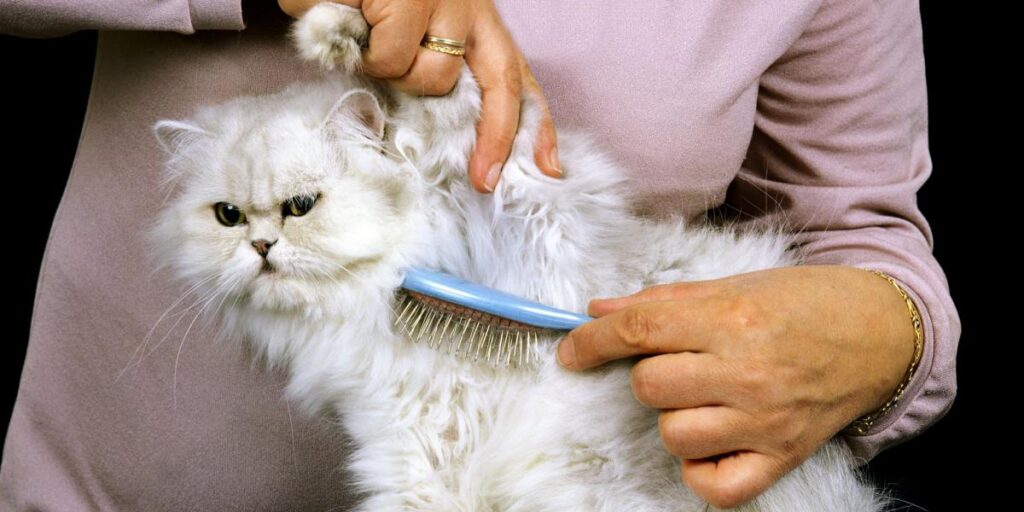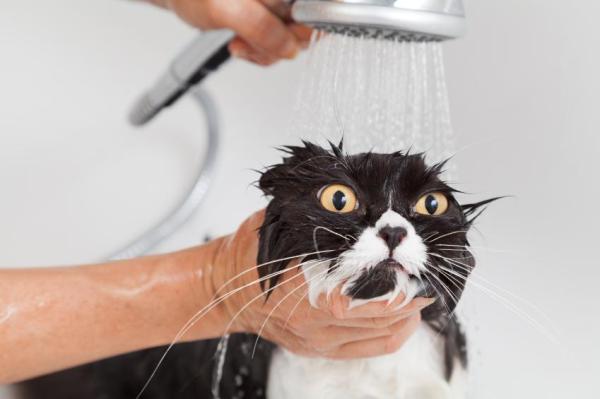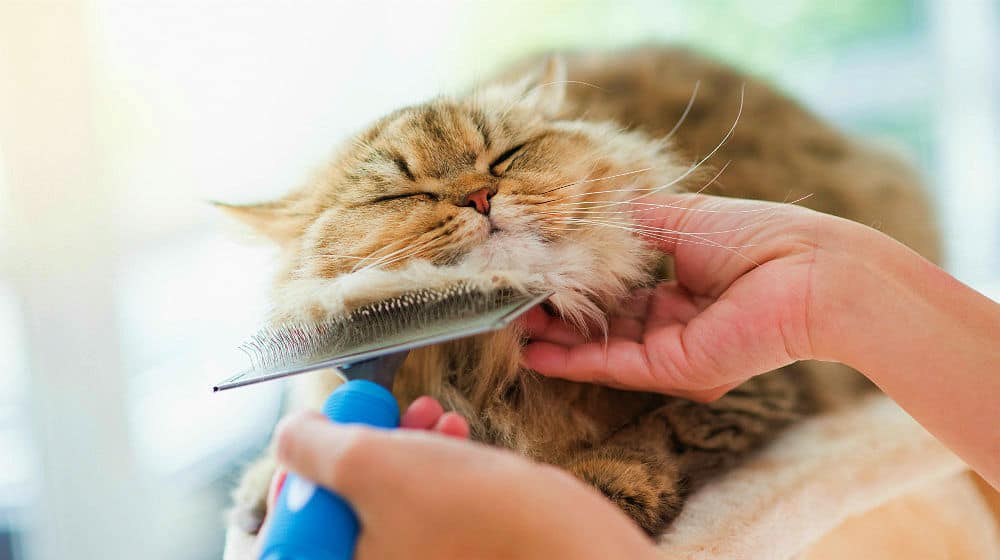So, you’ve got a Persian cat and you’re looking for some tips on bathing them? Look no further, because in this article, we’ll dive into some helpful content tips specifically for bathing your Persian cat. We’ll cover everything from how often to bathe them, to the best products to use, and even some tricks for making the experience as stress-free as possible. Whether you’re a seasoned Persian cat owner or a newbie looking for some guidance, you’re sure to find some useful information here.
Curious to know more? Well, in this article, we’ll go into detail about the importance of regular bathing for Persian cats and the specific steps you should follow to ensure a successful bath time. We’ll discuss the tools and products you’ll need, as well as some techniques for keeping your cat calm and comfortable throughout the process. You’ll also find answers to commonly asked questions about Persian cat bathing, so you’ll be well-prepared to give your furry friend a spa-like experience. So, if you’re ready to become a pro at bathing your Persian cat, keep reading and get ready to soak up some valuable tips!

Tips for Bathing Your Persian Cat
Bathing your Persian cat is an essential part of their grooming routine. While Persian cats are known for their luxurious coats, they require regular bathing to keep their fur clean and free from mats. However, bathing a Persian cat can be a bit challenging, as they are not particularly fond of water. In this article, we will provide you with some valuable tips and guidelines to make the bathing experience enjoyable and stress-free for both you and your furry friend.
Understanding the importance of bathing for Persian cats
Bathing serves several important purposes for Persian cats. It helps to remove dirt, debris, and excess oils from their coat, preventing matting and keeping their fur smooth and lustrous. Regular bathing also helps to reduce shedding, control dander, and minimize the risk of skin infections. Additionally, bathing allows you to closely inspect your cat’s skin for any signs of fleas, ticks, or other parasites.
Preparing the bathing area and supplies
Before you begin the bathing process, it is crucial to prepare the bathing area and gather all the necessary supplies. Find a warm and quiet room where you can bathe your Persian cat without any distractions or disturbances. Make sure to have all the items you need within reach, including cat-friendly shampoo, towels, a non-slip mat, a brush, and a comb.
Grooming and brushing your Persian cat before bathing
Before bathing your Persian cat, it is essential to groom and brush their fur thoroughly. Persian cats are known for their long and dense coats, which are prone to matting. By brushing your cat’s coat, you can remove any tangles or knots, making bathing easier and preventing mats from becoming worse. Use a slicker brush or a comb specifically designed for long-haired cats, and gently brush in the direction of hair growth.
Ensuring the water temperature is suitable
Persian cats are sensitive to extreme temperatures, so it is crucial to ensure that the water temperature is comfortable for your furry friend. Fill the bathtub or sink with lukewarm water, making sure it is neither too hot nor too cold. To check the water temperature, you can use a thermometer or dip your wrist into the water. Remember, cats have more sensitive skin than humans, so what may be warm for us can feel scorching for them.
Introducing your Persian cat to water gradually
Most cats are not particularly fond of water, and Persian cats are no exception. Therefore, it is essential to introduce your cat to water gradually and make the experience as positive as possible. Start by gently wetting your cat’s paws and gradually move upwards, allowing them to get used to the sensation of water. Use a cup or a sprayer to pour water over their body, avoiding their face. Be patient and calm, offering treats and praise to encourage a positive association with water.
Using cat-friendly shampoo for bathing
When it comes to choosing a shampoo for bathing your Persian cat, it is crucial to select a cat-specific product. Human shampoos can be too harsh for their sensitive skin and may cause dryness or irritation. Look for mild, hypoallergenic shampoos that are specifically formulated for cats. Avoid shampoos that contain harsh chemicals, fragrances, or dyes. If your cat has any skin conditions or allergies, consult your veterinarian for suitable shampoo recommendations.
Applying the shampoo and lathering your cat’s fur
Once your cat is wet, it’s time to apply the shampoo and lather their fur gently. Dilute the shampoo with water as per the instructions on the bottle and apply it to your cat’s coat, starting from their neck and working your way down to their tail. Use your hands to create a rich lather, being extra careful around the face and ears. Massage the shampoo into their fur, ensuring that it reaches the skin. Take your time and be gentle, making sure not to cause any distress or discomfort to your cat.
Rinsing off the shampoo thoroughly
After lathering your cat’s fur, it is time to rinse off the shampoo thoroughly. Make sure to remove all traces of shampoo from their coat to prevent skin irritation. Use lukewarm water to rinse your cat’s fur, starting from their head and working your way down. Again, be cautious around their face and ears, using your hands to gently remove any remaining shampoo. Continue rinsing until the water runs clear and there are no signs of shampoo residue.
Drying your Persian cat after bathing
Once you have finished rinsing, it’s time to dry your Persian cat. Start by gently squeezing excess water from their coat using your hands. Then, wrap your cat in a soft, absorbent towel and pat them dry. Avoid vigorous rubbing, as it can cause tangles or damage to their fur. If your Persian cat allows it, you can also use a hairdryer on a low and cool setting to speed up the drying process. However, make sure to keep the hairdryer at a safe distance to prevent overheating or scaring your cat.
Trimming your cat’s nails after bathing
While your Persian cat is still fresh from their bath, it is an excellent opportunity to trim their nails. Bathing softens the nails, making them easier to trim. However, if your cat becomes stressed or agitated during the nail-trimming process, it is best to postpone it for another time. Use specialized cat nail clippers and proceed with caution, avoiding the quick (the pink area) of the nail. If you are unsure or uncomfortable trimming your cat’s nails, consult a professional groomer or your veterinarian.
Dealing with resistant or fearful cats during bath time
Some Persian cats may be resistant or fearful of water, making the bathing process challenging. If your cat displays signs of stress or anxiety, it is crucial to handle the situation with patience and care. Consider using a calming spray or playing soothing music to create a more relaxing environment. Gradually introduce your cat to water, using a gentle approach and offering treats and praise for positive reinforcement. If necessary, seek the assistance of a professional groomer or consult your veterinarian for additional advice.
Frequency of bathing for Persian cats
The frequency of bathing your Persian cat depends on various factors, including their lifestyle, coat condition, and individual needs. Most Persian cats require monthly baths to keep their coats clean and free from matting. However, if your cat spends a lot of time outdoors or has specific skin conditions, more frequent bathing may be necessary. Remember, excessive bathing can strip the natural oils from your cat’s skin, leading to dryness or irritation. Consult your veterinarian to determine an appropriate bathing schedule for your Persian cat.
Common mistakes to avoid when bathing your Persian cat
While bathing your Persian cat, it is crucial to avoid some common mistakes that may cause stress or discomfort to your furry friend. Avoid using human shampoos or products that are not specifically formulated for cats, as they can be too harsh for their sensitive skin. Never pour water directly onto your cat’s face, as it may cause distress or fear. Be careful not to get water into your cat’s ears, as it can lead to ear infections. Lastly, never leave your cat unattended during the bathing process, as accidents can happen.
Conclusion
Bathing your Persian cat may seem like a daunting task, but with the right approach and patience, it can become a manageable and enjoyable experience. Understanding the importance of bathing, preparing the necessary supplies, introducing water gradually, using cat-friendly shampoo, and practicing proper drying techniques are all key factors in ensuring a successful and stress-free bath time for your Persian cat. Remember to be gentle, provide positive reinforcement, and consult your veterinarian if you have any concerns or questions about bathing your beloved furry companion.
Question and Answers:
-
How often should I bathe my Persian cat?
- Most Persian cats require monthly baths to keep their coats clean and free from matting. However, if your cat spends a lot of time outdoors or has specific skin conditions, more frequent bathing may be necessary. Consult your veterinarian to determine an appropriate bathing schedule for your Persian cat.
-
Can I use human shampoo to bathe my Persian cat?
- No, it is not recommended to use human shampoo on your Persian cat. Human shampoos can be too harsh for their sensitive skin and may cause dryness or irritation. It is best to use cat-specific shampoos that are mild and hypoallergenic.
-
How can I make bath time less stressful for my Persian cat?
- To make bath time less stressful for your Persian cat, introduce them to water gradually and make the experience as positive as possible. Use treats and praise to encourage a positive association with water. Consider using a calming spray or playing soothing music to create a more relaxing environment. Be patient and gentle throughout the bathing process.
-
Should I dry my Persian cat with a hairdryer after bathing?
- If your Persian cat allows it, you can use a hairdryer on a low and cool setting to speed up the drying process. However, make sure to keep the hairdryer at a safe distance to prevent overheating or scaring your cat. If your cat is uncomfortable with the hairdryer, wrapping them in a soft towel and allowing them to air dry is also an option.
-
How can I prevent matting in my Persian cat’s fur?
- Regular grooming and brushing are essential to prevent matting in your Persian cat’s fur. Use a slicker brush or a comb specifically designed for long-haired cats, and brush their coat thoroughly to remove tangles or knots. Pay extra attention to the areas prone to matting, such as behind the ears and under the chin.
-
What should I do if my Persian cat is resistant to bathing?
- If your Persian cat is resistant to bathing, it is important to handle the situation with patience and care. Gradually introduce your cat to water, using a gentle approach and offering treats and praise for positive reinforcement. Consider seeking the assistance of a professional groomer or consulting your veterinarian for additional advice.
-
Can I bathe my Persian cat myself or should I take them to a groomer?
- You can bathe your Persian cat yourself if you feel comfortable and confident in doing so. However, if you are unsure or uncomfortable with the bathing process, it is best to take them to a professional groomer. Professional groomers have the expertise and experience to handle Persian cats and can ensure a safe and thorough bathing experience.
-
How can I dry my Persian cat’s fur without causing damage?
- To dry your Persian cat’s fur without causing damage, gently squeeze out excess water using your hands. Then, wrap your cat in a soft, absorbent towel and pat them dry. Avoid vigorous rubbing, as it can cause tangles or damage to their fur. If necessary, you can use a hairdryer on a low and cool setting, keeping it at a safe distance from your cat’s fur.
-
Are there any special considerations for bathing Persian kittens?
- Bathing Persian kittens requires extra caution and care. Make sure to use lukewarm water and cat-specific shampoo that is mild and gentle. Keep the bathing process short and minimize handling to prevent stress or injury to the kitten. Consult your veterinarian for further guidance on bathing Persian kittens.
-
What should I do if my Persian cat develops skin irritation after bathing?
- If your Persian cat develops skin irritation after bathing, discontinue the use of any new products or shampoos. Rinse their coat thoroughly with lukewarm water to remove any remaining shampoo or irritants. If the irritation persists or worsens, consult your veterinarian for further evaluation and appropriate treatment.

